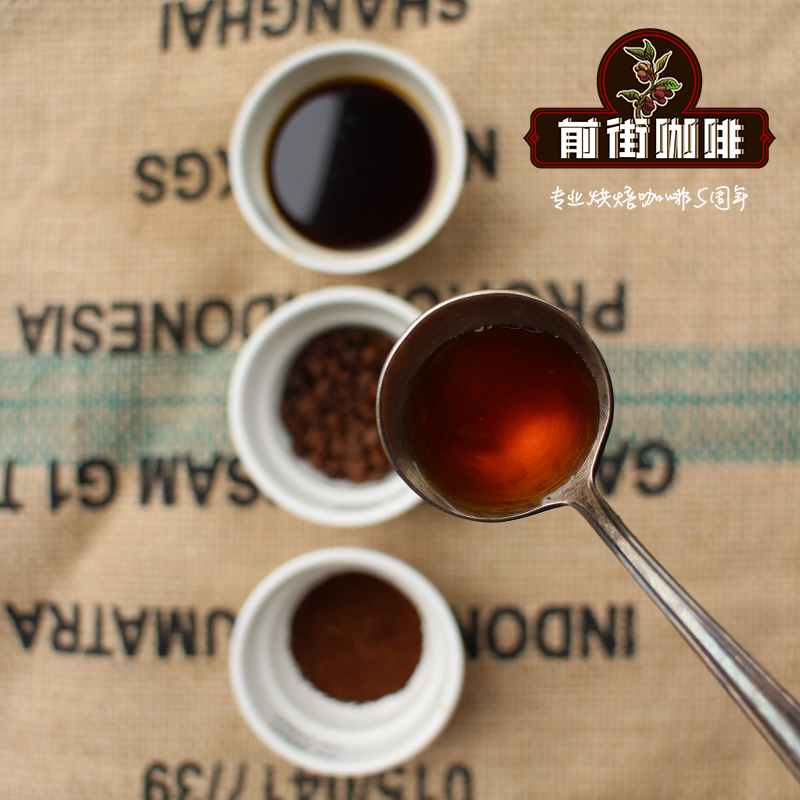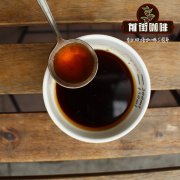What are Peruvian coffee producing areas? How to drink Peruvian coffee beans? Peruvian coffee hand brewing parameters

Professional coffee knowledge exchange more coffee bean information please follow the coffee workshop (Wechat official account cafe_style)
Peruvian coffee has always been used as one of the stable and mellow mixed beans of comprehensive coffee, and it is relatively low-key in the coffee industry. However, as more and more people like the mellow taste of Peruvian coffee, Peruvian coffee has sprung up rapidly in the international market in recent years, winning international coffee awards and becoming a rising star in the coffee industry.
Peruvian coffee is of high quality and balanced and can be used for mixed drinks.
Peru is located in western South America, with a coastline of 2254 kilometers, a dry and mild climate, suitable for coffee cultivation, and other natural environments, including the world's longest Andes, tropical rain forests, unique hills, and dry deserts. Huge and diverse land allows Peru to produce a large number of coffee beans with different flavors, so Peru is now second to Brazil and Colombia. The Latin region's third largest coffee producer and exporter ranked 12th in the world in 2016 in terms of the value of coffee exports.
More than 90% of Peruvian coffee is grown in the north, in the valleys east of the capital Lima, and in the forests of the slopes of the Andes, but it is most famous for its coffee beans from Chimacha Mayou in the middle and Cusco in the south. Peruvian coffee is characterized by its rich acidity and smoothness. The best Peruvian coffee has a strong aroma, smooth, layered, rich and sweet, the most special is the soft sour taste, easy to fall in love with.
The organic coffee beans from northern Peru are also very distinctive. This kind of coffee beans are grown in the shade without the use of fertilizers and pesticides. Because shade can slow down the maturity of coffee trees and help coffee grow fully, although the yield is not high, its quality can reach the level of gourmet coffee, so it is deeply loved by consumers in Europe and the United States.
Peru (Peru) is also a big coffee producer. Up to 98% of Peruvian coffee is grown in forest areas, and most producers are small farmers.
Peru has good economic conditions and a stable political situation, thus ensuring the good quality of coffee. However, there are many local problems, in addition to guerrilla warfare and drug trafficking, the emergence of cholera along the coast in the mid-1990s led to a further economic depression, and what is more, the annual inflation rate reached 7000%.
In the mid-1970s, Peruvian coffee production was about 900000 bags a year, and then steadily increased to about 1.3 million bags a year. Although private exporters buy coffee in remote areas through middlemen, the main market is still monopolized by the government. Later, the private Peruvian Coffee exporters Association (Comera de Exportadoresde Cafe del Peru), which is committed to improving the quality of coffee, its primary task is to set standards and eliminate inferior products, so as to create an atmosphere of quality supremacy. This positive move heralds a bright future for the coffee industry. Since then, rising prices have encouraged farmers to actively grow coffee instead of ── cocoa, the region's traditional cash crop.
Peru's finest coffee is produced in Chanchmayo, Cuzco, Norte and Puno. Most Peruvian coffee is grown under natural conditions, but it is also difficult to confirm the cultivation of all coffee trees. Coffee grown under natural conditions costs 10% more than others. Judging from poverty, farmers may not have the money to buy chemical fertilizers and pesticides, but it is really difficult to confirm all the coffee.
The quality of Peruvian coffee is comparable to that of any kind of coffee in Central or South America. The high quality coffee produced by Peru is shipped to Germany for blending and then to Japan and the United States, which also illustrates its high standard of quality.
Qianjie recommends Peruvian coffee brewing parameters:
V60According to one minute and fifty seconds, 15 ℃ / time
Important Notice :
前街咖啡 FrontStreet Coffee has moved to new addredd:
FrontStreet Coffee Address: 315,Donghua East Road,GuangZhou
Tel:020 38364473
- Prev

How to reduce the bitterness of Yega Xuefei? how to reduce the bitterness of Yega Xuefei?
Professional coffee knowledge exchange more coffee bean information Please follow the coffee workshop (Wechat official account cafe_style) in the coffee extraction theory, the dissolution of coffee juice in the third stage dissolves more bitterness and astringency. Therefore, in theory, the cooking time should not be too long (the complete time should not exceed 3 minutes). It is relatively difficult to pass the third stage of extraction. In fact, the third stage is also good.
- Next

How about Peruvian coffee? What are the producing areas of Peruvian coffee? How do you drink Peruvian coffee?
Professional coffee knowledge exchange more coffee bean information please pay attention to the coffee workshop (Wechat official account cafe_style) Peruvian coffee has always been used as one of the stable mellow mixed beans of comprehensive coffee, which is relatively low-key in the coffee industry. But as more and more people like the mellow taste of Peruvian coffee, Peruvian coffee has sprung up rapidly in the international market in recent years, winning many international coffee awards.
Related
- Detailed explanation of Jadeite planting Land in Panamanian Jadeite Manor introduction to the grading system of Jadeite competitive bidding, Red bid, Green bid and Rose Summer
- Story of Coffee planting in Brenka region of Costa Rica Stonehenge Manor anaerobic heavy honey treatment of flavor mouth
- What's on the barrel of Blue Mountain Coffee beans?
- Can American coffee also pull flowers? How to use hot American style to pull out a good-looking pattern?
- Can you make a cold extract with coffee beans? What is the right proportion for cold-extracted coffee formula?
- Indonesian PWN Gold Mandrine Coffee Origin Features Flavor How to Chong? Mandolin coffee is American.
- A brief introduction to the flavor characteristics of Brazilian yellow bourbon coffee beans
- What is the effect of different water quality on the flavor of cold-extracted coffee? What kind of water is best for brewing coffee?
- Why do you think of Rose Summer whenever you mention Panamanian coffee?
- Introduction to the characteristics of authentic blue mountain coffee bean producing areas? What is the CIB Coffee Authority in Jamaica?

